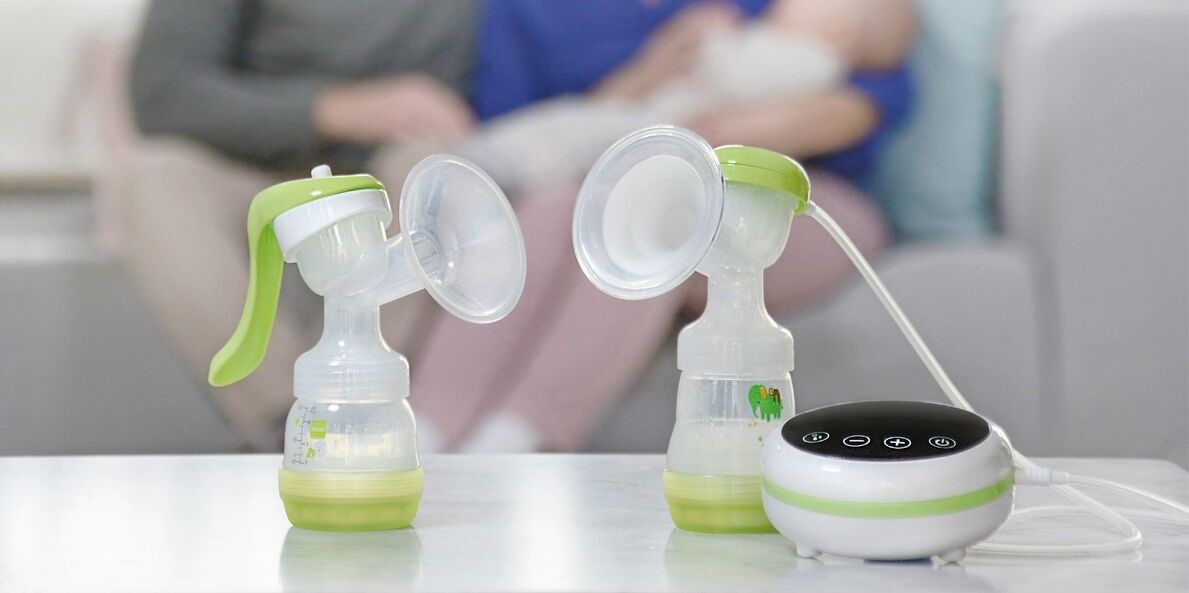You are in the first trimester, the 9th week of pregnancy and therefore at the start of the third month. Read on to discover how your baby is developing, why it is no longer an embryo and how the pregnancy can affect your body.
What's going on inside you at 9 weeks pregnant?
The little worm is slowly straightening up, turning somersaults and the first features are starting to develop. Fingers and toes are developing. All the organs are now developed, which is why from now on we call it a foetus, rather than an embryo.
Your baby is now roughly the size of a cherry.

And the organs are not only complete, some of them are even working already. In the liver, blood formation has started, the heart is beating steadily and the kidneys are maturing.
And there are more things happening in your foetus.
- Up to this point, the embryo was entirely without bones – the process of bone formation is now starting slowly in the arms.
- The eyes are still on the sides of the head, but they are already covered with eyelids.
- The ears and ear muscles are shifting to the "right" place on the head.
- The ultrasound will now show you if you are expecting twins.
The foetus is 16-24 mm long and weighs around 7 grams.
How Do You Feel at 9 Weeks Pregnant?
Morning sickness is still an issue for many pregnant women – and often remains so until around 12 weeks. Your sense of smell and taste are more sensitive than before. This affects both your susceptibility to morning sickness mentioned above and your eating habits. All of a sudden, even your favourite foods may no longer taste good.
The level of the pregnancy hormone HCG is now at its peak – and, as a result, some of the typical pregnancy-related problems such as fatigue and morning sickness become even worse.
Your uterus is now roughly the size of an orange. You won't need a lot more space yet, but your clothes might already be feeling a bit tight around the waist. In many women, this is due to hormonal bloating. The higher progesterone level causes the smooth muscles to relax. This also affects the gastrointestinal tract and blood vessel walls. In addition to constipation, other consequences include heartburn and varicose veins.
Heartburn during pregnancy is very common and, particularly in the later stage, is caused by the increased pressure on the stomach from the expanding uterus. The hormone progesterone also relaxes the valve between your stomach and oesophagus which contributes to the feeling of heartburn, allowing stomach acid to creep into the oesphaus. One sign of this is a sore throat in the early morning. Lying in a more upright position can help alleviate this problem. Eating several small meals and stopping eating a few hours before going to bed can also help to lessen the symptoms.
Changes in the circulatory system to improve the oxygen supply to the baby can cause you to quickly become short of breath even at this stage. The pregnant woman's breathing capacity now increases by up to 40%, so it is not unusual to become breathless when walking quickly.
If you have an ultrasound scan, it is generally still performed with a probe via the vagina, rather than over the abdomen. If you are in luck, you can watch your baby as it turns somersaults and swims in the amniotic sac.
Your antenatal care will follow a set schedule and will very depending on whether you are expecting your first or second baby. Your midwife will provide you with your pregnancy notes (which you should carry everywhere with you!) and will inform you of your schedule of appointments during your pregnancy.
The topic of antenatal screening is not always easy. There are now several ways to discover before birth whether your baby is affected by a genetic defect or malformations.
The following antenatal screening options are available:
- Nuchal scan (nuchal translucency measurement)This ultrasound scan is used to identify an accumulation of fluid in the foetus's nuchal fold. If this exceeds a certain size, it may be an indicator of a chromosomal abnormality (e.g. trisomy 21). Further tests will provide more information.
- Combined testIn this case, the result of the nuchal translucency measurement is combined with a blood test from the mother. This test should ideally be carried out in the 11th pregnancy week.
- AmniocentesisAn amniocentesis is performed by taking a small sample of cells from the amniotic fluid. This test is carried out under ultrasound to check for genetic or chromosomal abnormalities. It is only offered to those deemed high risk from the earlier antenatal screening.
- Chorionic villus samplingThis is an invasive testing method, i.e. it is carried out using a needle that is passed through the mother's abdominal wall or vagina to take the placenta which will then be tested. This test will only be offered to those deemed high risk from the other antenatal screening tests.
- Blood test for Down's syndromeThe mother's blood is tested to determine whether the child has Down's syndrome (trisomy 21). The test has been available in Europe since 2012 but, although it is very safe, it is not 100% reliable.
Most of these tests can be carried out around the 11th/12th pregnancy week, but they are neither essential nor mandatory. As an invasive method, amniocentesis and chorionic villus sampling also has risks, including miscarriage. But it is worth considering at this stage whether you want to have one of these tests and how you would handle a positive result.
Sources:
https://www.medizin-transparent.at/bluttest-down-syndrom/
Photo: Unsplash





























